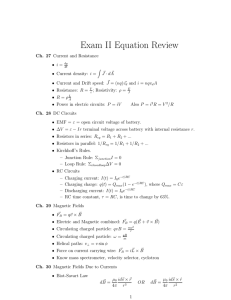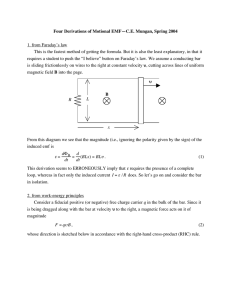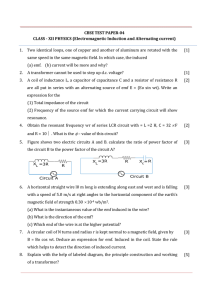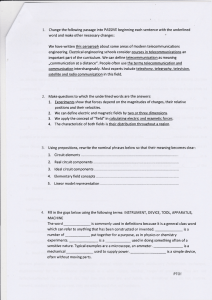Exam 2 Review
advertisement
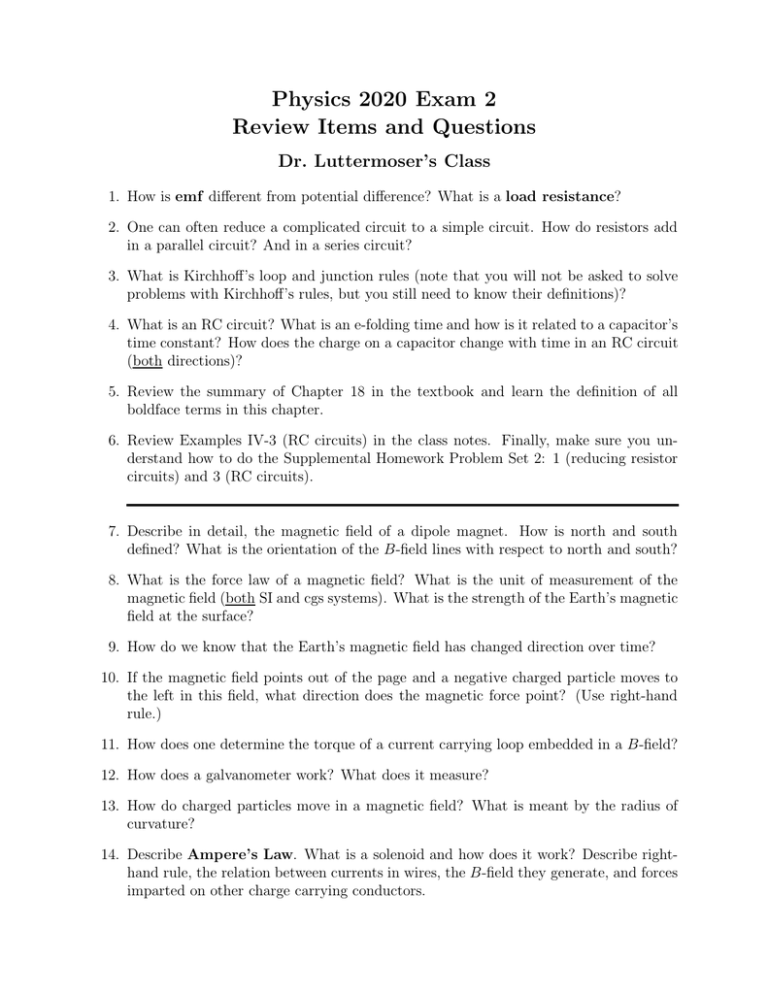
Physics 2020 Exam 2 Review Items and Questions Dr. Luttermoser’s Class 1. How is emf different from potential difference? What is a load resistance? 2. One can often reduce a complicated circuit to a simple circuit. How do resistors add in a parallel circuit? And in a series circuit? 3. What is Kirchhoff’s loop and junction rules (note that you will not be asked to solve problems with Kirchhoff’s rules, but you still need to know their definitions)? 4. What is an RC circuit? What is an e-folding time and how is it related to a capacitor’s time constant? How does the charge on a capacitor change with time in an RC circuit (both directions)? 5. Review the summary of Chapter 18 in the textbook and learn the definition of all boldface terms in this chapter. 6. Review Examples IV-3 (RC circuits) in the class notes. Finally, make sure you understand how to do the Supplemental Homework Problem Set 2: 1 (reducing resistor circuits) and 3 (RC circuits). 7. Describe in detail, the magnetic field of a dipole magnet. How is north and south defined? What is the orientation of the B-field lines with respect to north and south? 8. What is the force law of a magnetic field? What is the unit of measurement of the magnetic field (both SI and cgs systems). What is the strength of the Earth’s magnetic field at the surface? 9. How do we know that the Earth’s magnetic field has changed direction over time? 10. If the magnetic field points out of the page and a negative charged particle moves to the left in this field, what direction does the magnetic force point? (Use right-hand rule.) 11. How does one determine the torque of a current carrying loop embedded in a B-field? 12. How does a galvanometer work? What does it measure? 13. How do charged particles move in a magnetic field? What is meant by the radius of curvature? 14. Describe Ampere’s Law. What is a solenoid and how does it work? Describe righthand rule, the relation between currents in wires, the B-field they generate, and forces imparted on other charge carrying conductors. 15. How does one determine the direction of the B-field produced by a current flowing through a wire? (Use right-hand rule.) 16. What is meant by magnetic domains? Why are some materials ferromagnetic? 17. Review the summary of Chapter 19 in the textbook and learn the definition of all boldface terms in this chapter. 18. Review Examples V-1 (strength of E-field, B-field, and gravitational field), V-2 (force on current line in B-field), V-3 (torque on current carrying loop), V-4 (radius of curvature), and V-6 (solenoids) in the class notes. Finally, make sure you understand how to do the Supplemental Homework Problem Set 2: 4 (right-hand rule), 5 (force on charge moving in B-field), 6 (force from current), 7 (torque on current loop), 8 (radius of curvature), and 10 (solenoids). 19. What is magnetic flux and how is it related to induced emf? What is Faraday’s Law of Induction? What is Lenz’s law and what does it have to do with the polarity of Faraday’s law? 20. What is motional emf? 21. How do generators and electric motors work? What does back emf describe? 22. Describe what is meant by self-inductance. What is the SI unit of inductance? 23. How can one interpret L in an RL circuit. How is an RL circuit similar to an RC circuit? 24. Review the summary of Chapter 20 in the textbook and learn the definition of all boldface terms in this chapter. 25. Review Examples VI-2 (Faraday’s law), VI-3 (motional emf), VI-4 (electric motors), VI-5 (inductance), and VI-6 (stored energy in B-field) in the class notes. Finally, make sure you understand how to do the Supplemental Homework Problem Set 2: 11 (magnetic flux), 12 (induced emf), 13 (induced emf), 15 (inductance), 16 (RL circuit), and 17 (energy stored in B-field).
